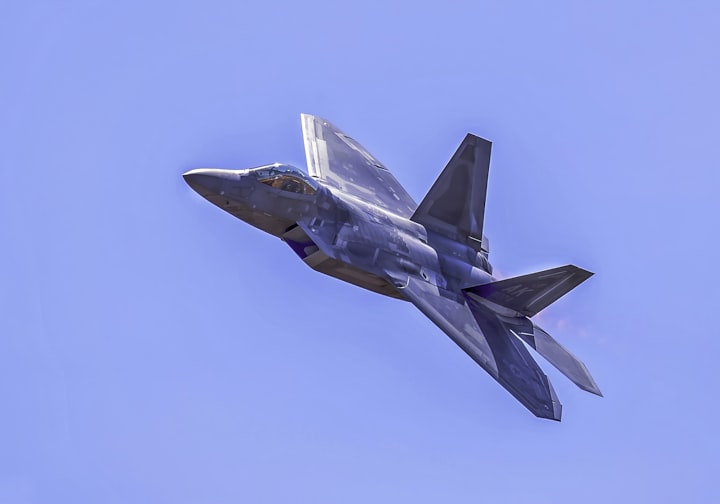
The US military claimed in a statement on Tuesday that a Chinese fighter jet engaged in a "unnecessarily aggressive manoeuvre" last week when it attempted to intercept a US spy plane in international airspace over the South China Sea.
On May 26, a Chinese J-16 fighter cut in front of the nose of a US RC-135 Rivet Joint surveillance plane, forcing the US plane to manoeuvre around the wake turbulence of the intercepting plane. The turbulence is visible in the US military's video of the incident as it disrupts the US aircraft's fly route.
According to the US Indo-Pacific Command, the RC-135 was conducting "safe and routine operations" in international airspace.
The US Indo-Pacific Joint Force will continue to fly in international airspace with due regard for the safety of all vessels and aircraft under international law, the statement from INDOPACOM said. "The United States will continue to fly, sail, and operate - safely and responsibly - wherever international law permits," it added.
On Wednesday, the Chinese Foreign Ministry refuted the claim of hostile behaviour and accused the US of regularly sending aircraft and ships to conduct surveillance on China, which it claimed posed a "serious danger" to China. "The main cause of maritime security problems is the US's risky and provocative actions. During a routine briefing in Beijing, spokesperson Mao Ning urged the US to quit engaging in such risky provocations."China will continue to take necessary measures to resolutely defend its sovereignty and security," she continued. The intercept occurs at a time when tensions between the two nations are high due to former House Speaker Nancy Pelosi's visit to Taiwan in August of last year and the US's choice to fire down a Chinese surveillance balloon that passed over important US military installations in February.
According to reports, the US is attempting to set up high-profile visits to China for senior officials in order to restart substantive discussions with Beijing. However, the Pentagon announced on Monday that China had rejected a proposal for Defence Secretary Lloyd Austin to meet with his Chinese counterpart Li Shangfu this week at the Shangri-La Dialogue Security Forum in Singapore.
According to a defence official who spoke to CNN on Monday, China rejecting the US' invitation to meet is "far from the first time that the PRC has rejected invitations to communicate."
Frankly, it's only the most recent justification in a long list. Over a dozen requests for senior leader engagements, numerous requests for standing dialogues, and over ten requests for working-level engagements from the Department of Defence have been denied or not responded to by the PRC since 2021, the official said.
Asserting that there had been "no interruption" in contact and that Beijing "attaches importance" to the growth of US-China military ties, the defence ministry of China on Wednesday rebutted such assertions while also accusing Washington for obstructing dialogue.
Nonetheless, another senior US defence source stated on Tuesday that China's interception of a US surveillance plane in international airspace was being dealt with "through appropriate, established diplomatic and military channels."
The intercept is identical to one that occurred in late December between US and Chinese military planes. A Chinese Navy J-11 fighter jet intercepted another RC-135 Rivet Joint over the South China Sea, which the US described as a "unsafe manoeuvre." According to US Indo-Pacific Command, the Chinese fighter approached within 20 feet of the nose of the US spy plane, causing the larger, heavier US aircraft to attempt evasive manoeuvres.
INDOPACOM video of the incident showed the J-11 flying off the nose of the RC-135. Before the two aircraft separated, the J-11 looked to be getting closer to the US plane.
According to an INDOPACOM representative, the number of dangerous aerial intercepts conducted by Chinese aircraft has increased alarmingly in the United States. Chinese aircraft have been increasingly aggressive, approaching US and coalition aircraft, raising concerns about a potentially dangerous incident or miscalculation.
The South China Sea has emerged as a key potential flashpoint in the Asia Pacific in recent years. Not only does the vital waterway contain immense quantities of fish, oil, and gas, but it also carries almost one-third of world shipping, valued at $3.4 trillion in 2016, according to the Centre for vital and International Studies' China Power Project.
China claims ancient sovereignty over practically the whole sea, and since 2014 has strengthened minor reefs and sandbars into artificial islands strongly armed with missiles, runways, and weapons systems, causing outrage among the other claimants.Hina claims historic sovereignty over practically the whole sea, and has been erecting minor reefs and sandbars into artificial islands heavily armed with missiles, runways, and weapons systems since 2014, causing outrage among the other claimants.





Comments
There are no comments for this story
Be the first to respond and start the conversation.